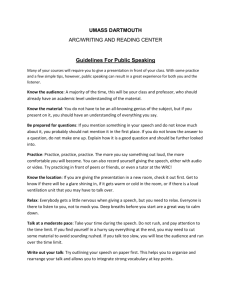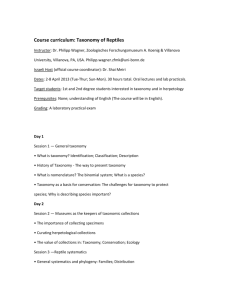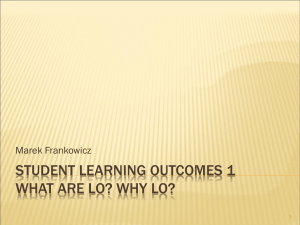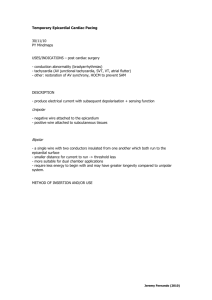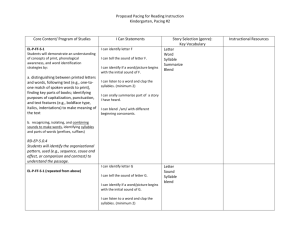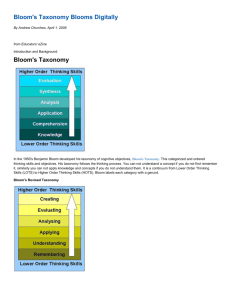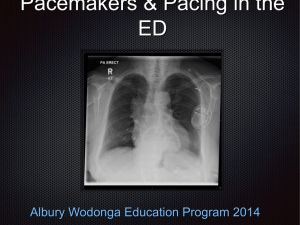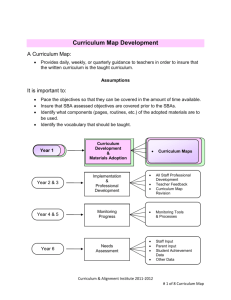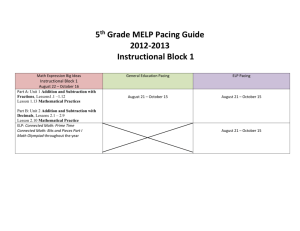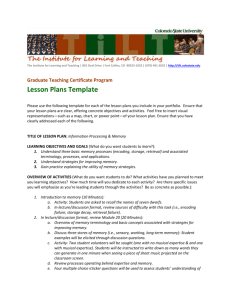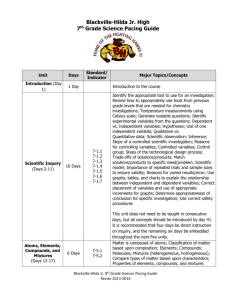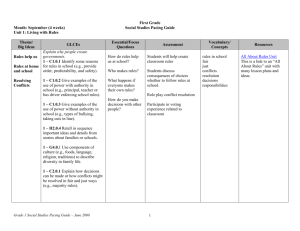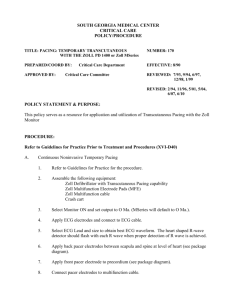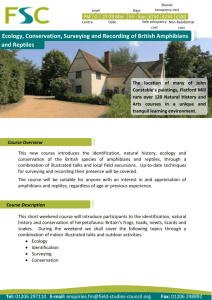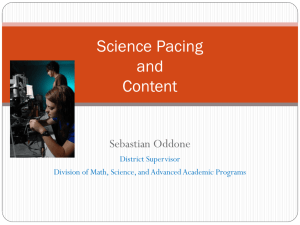Pacing Guide Expectations
advertisement
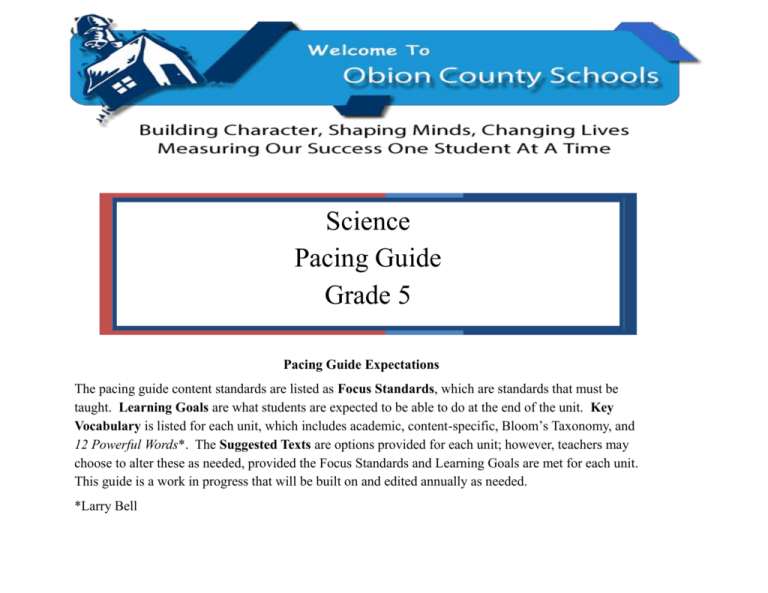
Science Science Pacing Guide Pacing Guide GradeGrade _____5 Pacing Guide Expectations The pacing guide content standards are listed as Focus Standards, which are standards that must be taught. Learning Goals are what students are expected to be able to do at the end of the unit. Key Vocabulary is listed for each unit, which includes academic, content-specific, Bloom’s Taxonomy, and 12 Powerful Words*. The Suggested Texts are options provided for each unit; however, teachers may choose to alter these as needed, provided the Focus Standards and Learning Goals are met for each unit. This guide is a work in progress that will be built on and edited annually as needed. *Larry Bell Bloom’s Revised Taxonomy Remember Describe/Explain Apply Analyze Evaluate Create Powerful Words* Analyze Compare Contrast Describe Evaluate Explain Formulate Infer Predict Summarize Support Trace *Larry Bell Assessment Topic Ecosystems, Communities, Biomes Focus Standard(s) 7.3.1 (Cont’d): Identify photosynthesis as the food manufacturing process in plants. 7.2.1: Describe the different types of nutritional relationships that exist among organisms. 7.8.1: Describe the effects of the oceans on weather and climate. 7.3.2: Compare how plants and animals obtain energy. 7.5.1: Identify physical and behavioral adaptations that enable animals such as, amphibians, reptiles, birds, fish, and mammals to survive in a particular environment. Suggested Time Frame September 3-19th Learning Goal 7.2.1: Describe the different types of nutritional relationships that exist among organisms. Essential Questions Revised Bloom’s Taxonomy 1) Can you list the parts of a food chain? Evaluate 2) Can you categorize living things by consumers and producers? 3) Can you develop a food chain that consists of one producer, the consumers, and one decomposer? Labs/Activities Common Core Reading/Writing Vocabulary Magazine pictures for Infer environmental Consumer food chains, food web, consequences of changes Producer and energy pyramid. in the populations in the Decomposer food chain. Sheppardsoftware.com 7.3.2 Compare how plants Explain the differences Describe/explain and animals obtain food. between the way plants and animals obtain energy. Double Bubble of Heidi and Henry Each student write how he would care for Heidi the Hibiscus and Henry the Hamster. Photosynthesis 7.5.1: Identify physical and behavioral adaptations that enable animals such as, amphibians, reptiles, birds, fish, and mammals to survive in a particular environment. Can you distinguish Analyze between the physical characteristics of an animal that lives in a polar region and one that lives in a desert? Bill Nye video Acrostic Poem Biome Physical adaptation Behavioral adaptation 7.8.1: Describe the effects of the oceans on weather and climate. How does being near a polar region or tropical region effect a living organism’s adaptation? Google Earth Evaluate Jeff Corwin videos Acrostic poem Ecosystem Foldables Compare and contrast Climate the plant and animal life of Hawaii and the coastal area of Maine. Unit One: _______________________________________________________________________________________ Essential Question: ________________________________________________________________________________ Suggested Texts/Resources www.tncore.org – click on link for “Literacy in Science and Technology”; summer training materials can be found here username: tneducation; password: fastestimproving http://tntel.tnsos.org/curricular.htm







